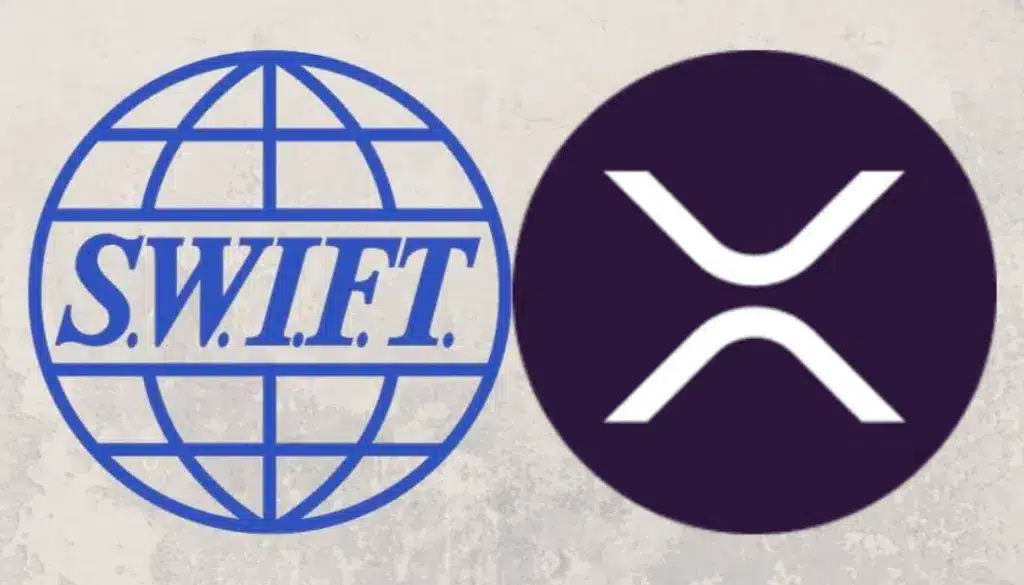In a newly released Cross-Border Payments Guide, blockchain firm Ripple has doubled down on its ambition to modernize global transactions through its expanding payment infrastructure.
Central to this push are XRP, its native digital asset, and RLUSD, a new U.S. dollar-backed stablecoin launched to compete directly in the fast-growing payments and stablecoin sectors.
The report emphasizes Ripple’s readiness to play a leading role in what is projected to become a $50 trillion cross-border payments market by 2035.
With its blockchain-native infrastructure and growing list of institutional partners, Ripple is positioning its solutions as faster, cheaper, and more transparent alternatives to traditional banking rails.
Cross-Border Payments: A System Ready for Change
Ripple’s publication underlines a point long echoed across fintech circles: cross-border payments are outdated, fragmented, and inefficient.
In 2024 alone, global cross-border payment volume reached $31.6 trillion, according to Ripple, with businesses continuing to rely on legacy systems like SWIFT, which require cumbersome nostro and vostro banking relationships to process international transactions.
Also Read: Analyst Says VivoPower Changes Everything for XRP – Here’s How
Traditional channels involve multiple intermediaries, long settlement times, high fees, and limited transparency. These constraints are particularly painful for small and medium-sized enterprises (SMEs), which face disproportionate costs and access issues when compared to large multinational firms.
“These extended, multi-party flows for traditional cross-border payments add up, resulting in unnecessarily slow, expensive, and opaque transactions that may be subject to multiple points of failure,” Ripple stated in the publication, adding that “Increasingly, organizations are turning to blockchain-based cross border payments to streamline these flows for greater speed, savings and transparency.”
The Blockchain Advantage: XRP and RLUSD Step In
Ripple is proposing a clean break from the status quo. Through Ripple Payments, the company offers an end-to-end blockchain-based solution, eliminating the need for intermediary banks and instead leveraging XRP for liquidity provisioning and RLUSD for price stability.
XRP has already been used in Ripple’s On-Demand Liquidity (ODL) system, enabling real-time conversion between fiat currencies in jurisdictions with limited liquidity. Now, with the addition of RLUSD, Ripple expands its reach into stable-value transactions, ensuring that businesses can send and receive payments without worrying about crypto volatility.
Ripple claims its system offers real-time settlement, full traceability, lower costs, and compliance-ready transparency—an increasingly important factor as global regulatory scrutiny intensifies.
RLUSD Gains Traction Among Exchanges
Since its December 2024 launch, RLUSD has begun gaining support across digital asset platforms. In the last 24 hours alone, the token has been listed on Euler Labs, a decentralized lending protocol, and Bitget, one of Asia’s fastest-growing crypto exchanges. These listings signal early institutional confidence in Ripple’s stablecoin strategy and suggest that RLUSD may carve out a significant slice of the growing $150 billion stablecoin market.
The entry of RLUSD is particularly timely. As regulatory bodies in the U.S. and EU begin to outline clearer stablecoin frameworks, such as the EU’s Markets in Crypto-Assets Regulation (MiCA), Ripple’s institutional-friendly brand and legal track record give it an edge against lesser-known issuers.
Ripple’s Strategic Positioning in a Competitive Market
While Ripple’s payment ambitions are not new, the coordinated rollout of XRP and RLUSD as a unified payments solution marks a significant strategic shift. It allows Ripple to compete on two fronts: real-time international settlements (via XRP) and stable-value payment rails (via RLUSD).
This dual approach sets Ripple apart from many of its blockchain competitors, who often rely solely on native tokens or third-party stablecoins. Moreover, Ripple’s regulatory clarity—especially following the U.S. court ruling confirming that XRP is not a security in secondary markets—gives it a solid legal foundation to expand operations in regulated markets.
Looking Ahead
With global payment needs accelerating, Ripple’s infrastructure overhaul comes at a critical time. Businesses, particularly those in emerging markets, are increasingly demanding faster and more reliable cross-border settlement systems, and governments are beginning to recognize the value of blockchain for financial infrastructure modernization.
As Ripple strengthens partnerships with banks, fintechs, and global remittance providers, its combined use of XRP and RLUSD could establish a new industry standard—one that simplifies global payments and challenges legacy systems like SWIFT at their core.
Also Read: Prominent Analyst Gives Updated XRP Price Prediction – Here’s How Much the Coin Could Surge Soon

